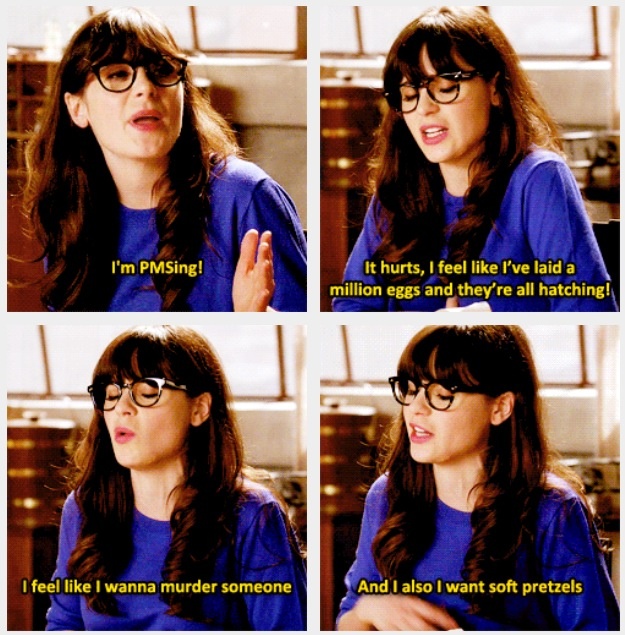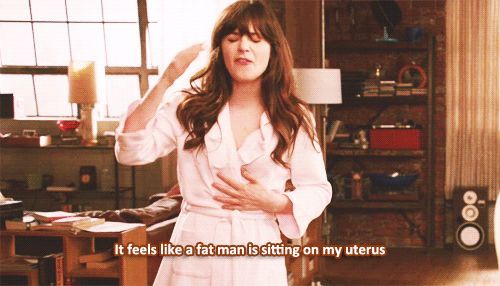As if a woman’s “time of the month” is not awkward and uncomfortable enough, some periods are accompanied by pain so bad, it is described as “getting punched in the stomach.” The pain can become so agonizing, it interferes with everyday activities for a few days every month. But what do women really know about the pain that visits them every month? Menstrual cramps have often been dismissed as a minor ailment. Today, medical professionals posses a broader understanding of this condition offering women relief because optimal management depends on understanding the underlying cause.

1. What are menstrual cramps?
Menstrual cramps are throbbing or cramping pains in the lower abdomen that accompany menstruation. Medically, it is referred to as dysmenorrhea. The pain of dysmenorrhea can range from something as annoying as a dull, constant ache or a feeling of pressure or intense pain that can radiate to the lower back and thighs. When cramps are severe, symptoms may include an upset stomach, vomiting or loose stools.
It can be divided into two broad categories: primary (not life-threatening or the symptom of a greater illness) and secondary (caused by another illness). Primary dysmenorrhea or “common” menstrual cramps usually begin one or two years after a woman’s first period. They start shortly before or when menstruation starts and continue one to three days. They usually become less painful as a woman ages and may stop entirely after the woman has her first baby. Secondary dysmenorrhea usually begins in the 20s or 30s after relatively painless menstrual cycles in the past. It occurs earlier in the menstrual cycle and lasts longer than common menstrual cramps and may be associated with heavy menstrual flow or irregular bleeding.

2. What causes menstrual cramps?
Menstrual cramps are caused by contractions in the uterus (“the womb”) which is a muscle. It tightens and relaxes throughout a woman’s menstrual cycle. Most of the time, women are unaware of these contractions. Chemical called “prostaglandins” are released during menstruation and these increase the strength of contractions. When the uterus contracts too strongly, it can press against nearby blood vessels, cutting off the supply of oxygen to the muscle tissue of the uterus. Pain results when part of a muscle briefly loses its supply of oxygen.
3. When should I see a doctor about menstrual pain?
• If the painful periods start later in life after relatively painless menstrual cycles in the past;
• Severe pain lasting more than two to three days;
• Pain occurring at the wrong time of the month;
• If you experience pain during or after sexual intercourse;
• If you have an abnormal vaginal discharge or bleeding;
• The pain is not relieved by medications or;
• If something just seems wrong.
These usually point to a more serious condition called secondary dysmenorrhea, which means the pain is a symptom of another more serious illness such as:
• Endometriosis: the tissue lining the uterus becomes implanted outside the womb
• Pelvic inflammatory disease: an infection of the female reproductive organs usually caused by sexually transmitted infections
• Cervical stenosis: the opening of the lower part of the uterus may be so small, it blocks menstrual flow causing a painful increase of pressure within the uterus
• Ovarian cysts and tumors
• Uterine fibroids or polyps
• Congenital malformations

4. How can menstrual pain be relieved?
Pain is generally relieved by over-the-counter pain relievers such as paracetamol, ibuprofen, or naproxen. For best results, take these as soon as bleeding or cramping starts or for severe pain, take these 1-2 days before your period starts. However, make sure that you are not allergic to these medications and that you do not have conditions that exclude you from taking these. Your doctor may also recommend taking hormonal treatments such as oral contraceptives.
Natural remedies such as placing a heating pad or hot water bottle on your lower back or abdomen or taking a warm bath may also provide some relief. Rest when needed. Avoid food that contain caffeine and salt. Avoid smoking and drinking alcohol.
5. Are there any complications? What is the worst-case scenario?
Primary dysmenorrhea generally do not cause any medical complication but it could interfere with school, work, and leisure. However, conditions associated with secondary dysmenorrhea such as endometriosis may cause fertility problems. Pelvic inflammatory disease can lead to scarring which can lead to adhesions that might be life-threatening and require surgery.
Whatever the cause of menstrual cramps, these can be treated so it is important to get checked. After all, why should women have this discomfort when there are things that can be done to help?


